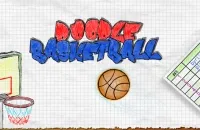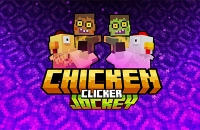Snake Game
Snake Game
Connecting to game server...
0% complete

Snake Game
Click to start playing
🕹️ You May Also Like












Snake Game
The timeless mobile classic where you guide a growing snake to eat food while avoiding walls and yourself. Simple controls create challenging gameplay.
Snake Game is the timeless arcade classic that defined mobile gaming. Control a growing snake as it moves around the screen, eating food to grow longer while avoiding walls and its own tail. The simple concept creates increasingly challenging gameplay as your snake grows and the available space shrinks. This version captures all the addictive gameplay of the original with smooth controls and classic graphics.
🎮 How to Play
- 1Arrow keys to change direction
- 2Eat food to grow longer
- 3Avoid walls and your own tail
💡 Game Tips
- 💡Plan your path to avoid getting trapped
- 💡Use the edges strategically
- 💡Don't grow too fast in tight spaces
- 💡Think several moves ahead
📚Complete Strategy Guide
Master Snake Game with our comprehensive guide and pro tips
The Snake Game represents one of the most enduring and influential video games in history, combining simple mechanics with addictive gameplay that has captivated players for decades. From its origins on early mobile phones to modern browser implementations, Snake continues to challenge players with its deceptively simple yet increasingly complex gameplay. This comprehensive guide will transform you from a casual player into a Snake Game master, covering everything from basic movement to advanced scoring strategies.
Understanding Snake Game Mechanics
Core Gameplay Elements
The Snake Character:
- Growing segments - Each food item adds one segment to your snake's tail
- Continuous movement - Snake constantly moves in the chosen direction
- Head collision - Game ends if the head touches any part of the body
- Wall collision - Traditional versions end when hitting boundaries
Movement Mechanics:
- Four-direction control - Up, Down, Left, Right only
- No diagonal movement - Must move in cardinal directions
- Immediate response - Direction changes take effect instantly
- No stopping - Snake must always be moving forward
Game Board Understanding
Grid-Based Movement:
- Square grid - Game area divided into equal squares
- Discrete positions - Snake occupies exact grid squares, not partial positions
- Predictable paths - Every movement follows grid lines precisely
- Spatial awareness - Understanding grid helps plan routes
Food Mechanics:
- Random placement - Food appears at random unoccupied grid positions
- Single food - Only one food item exists at a time
- Instant consumption - Food disappears immediately when head touches it
- Score increment - Each food item increases score (usually by 1-10 points)
Basic Strategy Fundamentals
Early Game Foundation (Length 1-10)
Movement Priorities:
- Stay centered - Keep snake near the middle of the board
- Avoid walls - Maintain distance from boundaries
- Plan ahead - Think 2-3 moves in advance
- Control speed - Many versions allow speed adjustment
Food Collection Strategy:
- Direct paths - Take shortest route to food when safe
- Wall awareness - Avoid getting trapped against edges while collecting
- Exit planning - Always ensure you can escape after eating
- Patience - Don't rush into dangerous positions for food
Developing Spatial Awareness
Board Visualization:
- Mental mapping - Keep track of snake's body position without looking
- Path prediction - Visualize where snake will be in several moves
- Safe zones - Identify areas where movement is currently safe
- Danger recognition - Spot potential trap situations early
Body Position Management:
- Tail following - Your tail moves away as you move forward
- Space creation - Each move creates new space where tail was
- Body avoidance - Plan routes that don't intersect with your body
- Growth accommodation - Account for length increase after eating
Intermediate Techniques (Length 10-25)
Advanced Movement Patterns
The Spiral Strategy:
- Outward spirals - Start from center and spiral outward
- Inward spirals - Begin at edges and spiral toward center
- Controlled growth - Maintain predictable patterns while collecting food
- Space efficiency - Use available area systematically
Wall-Following Technique:
- Perimeter tracing - Follow walls to create safe, predictable paths
- Corner navigation - Safely turn corners while maintaining wall contact
- Interior access - Plan routes to reach center areas when needed
- Escape routes - Always maintain paths back to open areas
Risk Assessment Skills
Situation Evaluation:
- Current position - Analyze snake's location and orientation
- Body distribution - Understand how your tail is positioned
- Food location - Assess safest path to next meal
- Available space - Calculate remaining free grid squares
Decision Making Framework:
- Safety first - Prioritize survival over immediate food collection
- Calculated risks - Take chances only when odds strongly favor success
- Alternative routes - Always have backup plans for food collection
- Long-term thinking - Consider consequences 5-10 moves ahead
Advanced High-Score Strategies
Pattern Development (Length 25+)
Systematic Coverage:
- Grid division - Mentally divide board into sections
- Methodical clearing - Clear sections systematically rather than randomly
- Pattern consistency - Develop repeatable movement sequences
- Efficiency optimization - Minimize unnecessary movements
The Hamiltonian Path Approach:
- Complete coverage - Create path that visits every square exactly once
- Guaranteed safety - Following predetermined safe path eliminates collisions
- Score maximization - Ensures collection of every possible food item
- Mental discipline - Requires strict adherence to planned route
Space Management Mastery
Territory Control:
- Zone creation - Use body to create separate areas
- Access management - Control which areas remain reachable
- Bottleneck avoidance - Prevent creating narrow passages
- Expansion planning - Always maintain room for growth
Advanced Path Planning:
- Multi-move sequences - Plan complex maneuvers involving multiple turns
- Body positioning - Use current body position to influence future options
- Trap prevention - Recognize and avoid potentially dangerous configurations
- Dynamic adjustment - Modify plans based on food placement
Expert-Level Techniques
Speed Management
Velocity Control:
- Variable speeds - Use different speeds for different situations
- Acceleration timing - Speed up in open areas, slow down in tight spaces
- Reaction preparation - Adjust speed based on required reaction time
- Rhythm development - Find comfortable timing patterns
Precision Movement:
- Exact timing - Master precise moment to change direction
- Minimal corrections - Make smooth, efficient direction changes
- Momentum utilization - Use current movement direction advantageously
- Flow state - Achieve continuous smooth movement without hesitation
Psychological Mastery
Pressure Management:
- Stay calm - Maintain composure as snake length increases
- Focus maintenance - Keep attention on current position and immediate dangers
- Confidence building - Trust your developed skills and patterns
- Mistake recovery - Don't panic after near-misses or errors
Long-Game Mentality:
- Patience cultivation - Accept that high scores require time and patience
- Delayed gratification - Resist risky moves for immediate food collection
- Persistence - Continue playing through difficult positions
- Learning attitude - View failures as learning opportunities
Score Optimization Strategies
Point Maximization
Food Collection Efficiency:
- Minimize movements - Take shortest safe paths to food
- Reduce backtracking - Plan routes to avoid retracing paths
- Sequential collection - Collect food in logical order when multiple items appear
- Time optimization - Some versions award bonus points for speed
Combo Strategies:
- Rapid collection - Collect multiple food items quickly for potential bonuses
- Chain reactions - Plan routes that allow efficient collection of subsequent food
- Multiplier awareness - Some versions offer score multipliers for consistent play
- Streak maintenance - Keep collection streaks alive for maximum points
Endgame Excellence
High-Length Management:
- Ultra-conservative play - Prioritize safety over speed when length is extreme
- Perfect execution - Every move must be calculated and precise
- Pattern adherence - Stick to proven safe patterns
- Mental endurance - Maintain concentration for extended periods
Perfect Game Pursuit:
- Complete board coverage - Fill entire board with snake body
- Theoretical maximum - Understand the highest possible score for your board size
- Consistency requirements - Achieve high scores repeatedly, not just once
- Documentation - Record your strategies and analyze successful attempts
Common Mistakes and Solutions
Movement Errors
Problem: Panic Reversals
- Symptom: Quickly reversing direction when encountering danger
- Consequence: Immediate collision with body
- Solution: Practice calm decision-making under pressure
- Prevention: Develop automatic safe movement patterns
Problem: Tunnel Vision
- Symptom: Focusing only on food location, ignoring surroundings
- Consequence: Running into walls or body while pursuing food
- Solution: Maintain awareness of entire board state
- Prevention: Practice peripheral vision and spatial awareness
Strategic Mistakes
Problem: Greedy Food Collection
- Symptom: Taking risks to collect food quickly
- Consequence: Unnecessary deaths in easily avoidable situations
- Solution: Prioritize safety and long-term survival
- Prevention: Develop patience and conservative play style
Problem: Poor Space Management
- Symptom: Creating tight spaces or dead ends
- Consequence: Getting trapped with no escape routes
- Solution: Always maintain open pathways
- Prevention: Think several moves ahead before executing
Mental Game Issues
Problem: Performance Anxiety
- Symptom: Playing worse when close to personal best scores
- Consequence: Making uncharacteristic mistakes due to nervousness
- Solution: Focus on process rather than outcome
- Prevention: Practice relaxation techniques and mental preparation
Problem: Impatience
- Symptom: Rushing through moves or taking unnecessary risks
- Consequence: Premature game endings when high scores were possible
- Solution: Cultivate patience and steady play
- Prevention: Set process goals rather than just score goals
Training and Practice Methods
Skill Development Exercises
Pattern Practice:
- Spiral drills - Practice creating perfect spirals without food pressure
- Wall following - Train smooth wall-adjacent movement
- Figure-eight patterns - Develop precise turning and spacing skills
- Grid counting - Practice estimating distances and planning routes
Reaction Training:
- Obstacle courses - Create challenging body positions and practice escape
- Speed variations - Practice playing at different velocities
- Pressure situations - Deliberately create difficult scenarios for practice
- Recovery exercises - Practice recovering from near-collision situations
Mental Training
Visualization Techniques:
- Path planning - Mentally trace routes before executing
- Future position - Visualize where snake will be after sequences of moves
- Pattern recognition - Train to quickly identify familiar patterns
- Risk assessment - Practice rapid evaluation of dangerous situations
Concentration Building:
- Extended sessions - Build stamina for long high-score attempts
- Distraction resistance - Practice maintaining focus with external noise
- Pressure simulation - Create artificial pressure during practice
- Mindfulness practice - Develop present-moment awareness during play
Different Snake Game Variations
Classic Versions
Original Snake:
- Wall collision - Hitting walls ends the game
- Single food - Only one food item at a time
- Fixed speed - Constant movement velocity
- Simple scoring - Usually 1 point per food item
Nokia Snake:
- Wrap-around walls - Snake appears on opposite side when hitting wall
- Level progression - Advancing levels increase speed
- Obstacle addition - Some levels include wall obstacles
- Bonus items - Special food items worth more points
Modern Variations
Multiplayer Snake:
- Multiple snakes - Compete against other players simultaneously
- Collision rules - Different games handle snake-to-snake collisions differently
- Power-ups - Special items that provide temporary advantages
- Territory control - Some versions involve controlling board areas
3D Snake:
- Three-dimensional movement - Add up/down movement options
- Complex collision - More sophisticated spatial awareness required
- Enhanced graphics - Visual depth and perspective challenges
- Advanced patterns - Traditional strategies require adaptation
Technology and Platform Considerations
Input Methods
Keyboard Controls:
- Arrow keys - Traditional and most precise input method
- WASD keys - Alternative keyboard control scheme
- Response timing - Understand input lag and timing requirements
- Key repeat - Avoid accidental multiple inputs
Touch Controls:
- Swipe gestures - Directional swipes on mobile devices
- Tap controls - Some implementations use tap-based direction changing
- Precision challenges - Touch inputs can be less precise than keyboard
- Screen size - Smaller screens make precise control more difficult
Performance Factors
Frame Rate Impact:
- Smooth movement - Higher frame rates provide smoother gameplay
- Input responsiveness - Better frame rates reduce input lag
- Visual clarity - Smoother animation helps with precise movement
- Consistency - Stable frame rate prevents timing disruptions
Browser and Platform Differences:
- Implementation variations - Different versions may have slightly different physics
- Performance optimization - Some platforms run more smoothly than others
- Feature availability - Speed controls and other options vary by implementation
- Save functionality - High score recording varies between platforms
Conclusion: Mastering the Eternal Challenge
Snake Game exemplifies the principle that the best games are easy to learn but incredibly difficult to master. While anyone can understand the basic concept within seconds, achieving truly high scores requires developing sophisticated spatial awareness, strategic thinking, pattern recognition, and mental discipline that can take years to perfect.
Key Success Principles:
- Master fundamentals - Perfect basic movement and spatial awareness
- Think systematically - Develop consistent patterns rather than random movement
- Prioritize safety - Long-term survival beats short-term gain
- Practice patience - High scores require time and careful play
- Learn continuously - Analyze failures and refine techniques
Your Development Path:
- Foundation building - Master basic controls and simple patterns
- Strategic development - Learn intermediate techniques like spiraling and wall-following
- Advanced pattern mastery - Develop systematic approaches to board coverage
- Mental game - Cultivate patience, focus, and pressure management
- Perfect execution - Achieve consistent high-level performance
Final Thoughts: Snake Game remains relevant decades after its creation because it perfectly captures the essence of strategic gaming: simple rules that generate complex, engaging challenges. Whether you're playing during a break, competing for high scores, or using it as a meditation on focus and patience, Snake Game offers unlimited opportunities for improvement and mastery.
The grid awaits, the apple beckons, and your snake is ready to grow. How long can you make it?